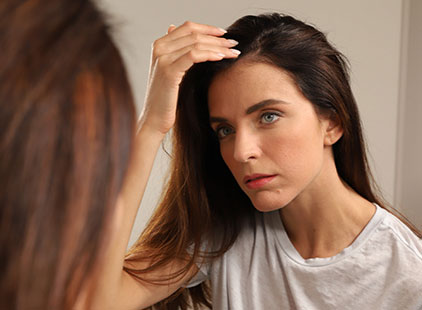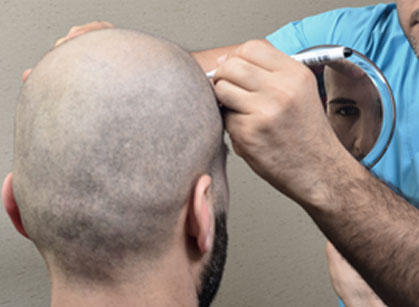Female hair loss
Female hair loss is a common form of non-scarring hair loss, characterized by the progressive loss of hair in the forehead and crown regions, resulting in visible thinning. Unlike male hair loss, female hair loss in the affected areas is usually incomplete and the occipital area is generally spared.

 English
English  Italiano
Italiano  Français
Français  Español
Español 



